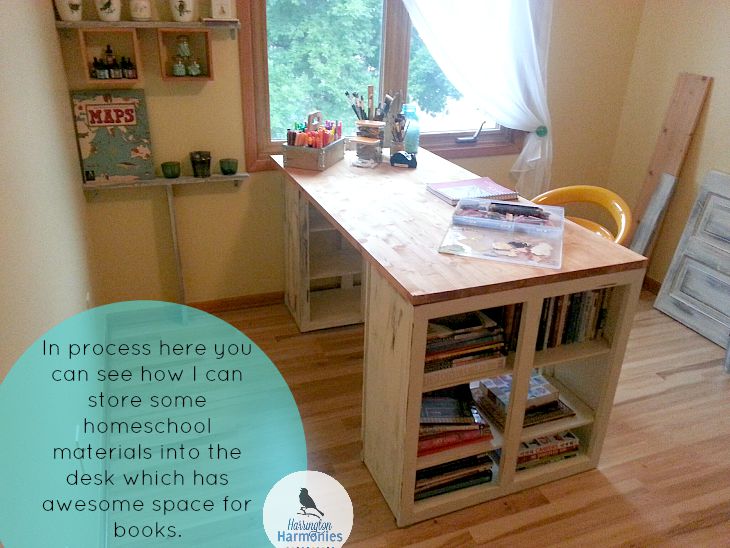
I find Ancient art so fascinating that I decided to create a whole blog series full of lesson plans for it- Art Around the Ancient World. Plus we are studying ancient history this year so it is the perfect complement to our own homeschool. This is the first lesson in the series.
Prehistoric Art for Kids
Prehistoric art tells us about the early life of the nomadic hunters and gatherers. Prehistory is everything before literacy had developed. This can fall into different timeline dates for different people of different parts of the world. To keep it simple we recorded it in our timeline right at the beginning- 6000 B.C. and wrote: hunters and gatherers.

Though we don’t have “written” records to guide us the pictographs tell us much about the people who lived even before writing developed. What’s also interesting is that these early paintings and carvings are found almost everywhere on earth and on every inhabited continent. Prehistoric art is found all around the globe. It’s not just the cave paintings of Lascaux we should consider but prehistoric art from all over the globe such as the rock art of the Anasazi ( Ancient Pueblo) and the various tribes of Africa.
Books on Prehistoric Art for Kids
If there is no written record, from what do we get our knowledge of the first people?
This question brought up wonderful discussion on archeology and anthropology with my son. Then we began to explore the art that tells us about these first people. I used Stories on Stone: Rock Art, Images from the Ancient Ones to do a sort of “picture study” of prehistoric art with him. It was a wonderful holistic approach to studying cave & rock art -both the paintings and carvings. So it’s my number one recommendation. We enjoyed looking at each “story” being told in these ancient works of art. What do they tell us about how these real people once lived?

A few of the following also went into a book basket for mechanical man to explore on his own.
The Cave Painter of Lascaux– Puts the “real” into the people behind the cave paintings-reproductions make it worth the read.
Discovery in the Cave (Step into Reading)– A great choice for a newly confident/ emerging reader.
The Secret Cave: Discovering Lascaux– I have not seen it myself but thought it was worth mentioning.
Painters of The Caves (National Geographic Society)– Great for information and is a great resource for images.
The First Drawing-Looks enchanting.
Easy Field Guide to Rock Art Symbols of the Southwest (Easy Field Guides)-It would add more about the rock art side of this and may be helpful in recreating some of the symbols.
Prehistoric Art Vocabulary Suggestions
- Petroglyphs
- Pictographs
- Lascaux
- Prehistory
- Archeology
- Anthropology
What you will need to make your own cave art:
- Old looking paper. Off white butcher paper is probably your best bet. But any kind can work. (I used packing paper and made it look old.)
- Plaid Acrylic Paint, 2-Ounce: Terra Cotta, Brown, White, Black
- Natural Hair Ink Artist Brushes
or substitute
Prehistoric Art for Kids Project Tutorial:
Note: We need a canvas to paint on. So even though most of this prehistoric art was done on cave walls and stone, we will use paper. You can discuss this with your child. Select paper that is an off white. I used a packing paper from one of our moving boxes so you can really use any paper that you feel will work nicely.

Preparation. Tear paper edges unevenly to look like animal hide canvas. Then add coffee or tea stains for a discoloring of the paper effect. You can also wrinkle and crinkle the paper and burn some areas to make it look old. I also used some very watered down paint to add to the discoloring.
Once I created the “animal hide canvas” this was a project my homeschooler was really excited to do and he totally took right over once I got all the materials out and ready for him.
 Paint. Use colors that are consistent with the cave painters and early people’s materials. Since they made most from natural minerals the pigments used included red and yellow ochre, hematite, manganese oxide (green) and charcoal. So stick with browns, reds, dark yellows, blacks and different shades of those colors. If you want more color try grayish blues and/ or green pigments as well. Ours sticks to the more earth tones.
Paint. Use colors that are consistent with the cave painters and early people’s materials. Since they made most from natural minerals the pigments used included red and yellow ochre, hematite, manganese oxide (green) and charcoal. So stick with browns, reds, dark yellows, blacks and different shades of those colors. If you want more color try grayish blues and/ or green pigments as well. Ours sticks to the more earth tones.
Make Your Own Prehistoric Painting
You may think this art is “primitive” and so it should be easy to recreate. For me no art is primitive because all art- if it is good and moral- is expressive and a reflection of something inside. These beautiful paintings and carvings represent a life that was led and are one of the few things we can go to to learn about prehistoric people. It tells us something about them.
After studying a little about this early art tell your child to guess what life must have been like for these people. If they were an ancient boy or girl what would they “write and record” on their cave or rock. What purpose would it serve?
 Now create.
Now create.
You can have your child recreate something similar to what they see in the books. This was mainly what we did. Hand prints, both stamped and stenciled, were often used so we made that the center part of our painting and added small petroglyph type images all around. If your child likes to pretend they might like to imagine what they would paint about if they were a “cave child” and let that inspire their creation.
 In the end we used our painting as a homemade journal book cover. We made and bound our own book; sewing it along the spine and then we glued the cover on the first and last page to bind it.
In the end we used our painting as a homemade journal book cover. We made and bound our own book; sewing it along the spine and then we glued the cover on the first and last page to bind it.
I plan to let mechanical man use this journal throughout the year while I read to him our read alouds and perhaps some of the history lessons. I will have him date and write the title of the book we are reading at the time so it will also serves as a record of what we have read together.
From my co-op class:

This was the first in my blog series Art Around the Ancient World!
Art Around the Ancient World- the line up:
The following lists each lesson by civilization, what each lesson’s focus will be, and the media/project tutorial. (These are subject to change.)
- Prehistory– Cave Paintings- Painting the Ancient Way
- Sumerians – Ancient Writing -Cylinder Seals in Clay
- Egyptians – Egyptian Art and Hieroglyphs- Multi Media/ Egyptian Headdress
- Assyrians and Babylonians –Near East Metalworking – Babylonian Art Lesson for Kids
- Phoenicians– Ancient Dyes- Purple Batik Cloths
- Hittites and Ancient Israel– TBA
- Ancient Africa– Akuaba Wooden Doll- Scratch Art
- Minoan and Mycenaean– Early Greek Masks-Paper Mache Masks
- Persians– Persian Carpets and Decor- Paper Weaving
- Ancient China- Tangrams– Tessellating Birds
- Greece- Etruscan Vases- TBA
- Rome- Mosaics- TBA
Be sure to follow my Pinterest board too! The possibilities are epic!























9 Comments
AnaLee
I just stumbled on your page and was so excited to find your ancient art history ideas. I was even more excited to see that you had already linked them with SOTW!! Now I don’t have to do it all myself! Thank you for all your work. It looks wonderful. I’m so excited to use them this year.
Stephanie
You are very welcome! So very glad you found me. I’d love your feedback on those art lessons if you get time to use them. I plan to write them all up with even more supplements and develop them as a full art program for sale. So contact me any time:-)
Stef Layton
these are great – I’m sharing them!
Stephanie
Thank you Stef!
Jessy from Our Side of the Mountain
Any ideas why I am not able to add your blog URL to my list on blogger? (It’s on the side bar.) I’ll like to see when the Ancient Art (and other posts) are done…but for some reason when I try to add your blog is says it “can’t detect a feed”.
Stephanie
I am not sure why. I really should work. Perhaps it is a widget that only works with other blogger blogs? You can always subscribe to be sure and not miss the posts.
Michelle Caskey
Tea staining the paper is also a great way to make it look old. Looks like you all had fun with this project. We did something similar awhile back and it was fun.
Jessy from Our Side of the Mountain
Great idea about using the art as a cover! I think I may do that for our History Notebook. My plan is to use brown paper bag and the kids will draw/write pictographs, etc. onto it.
Stephanie
Paper Bags are a great idea!